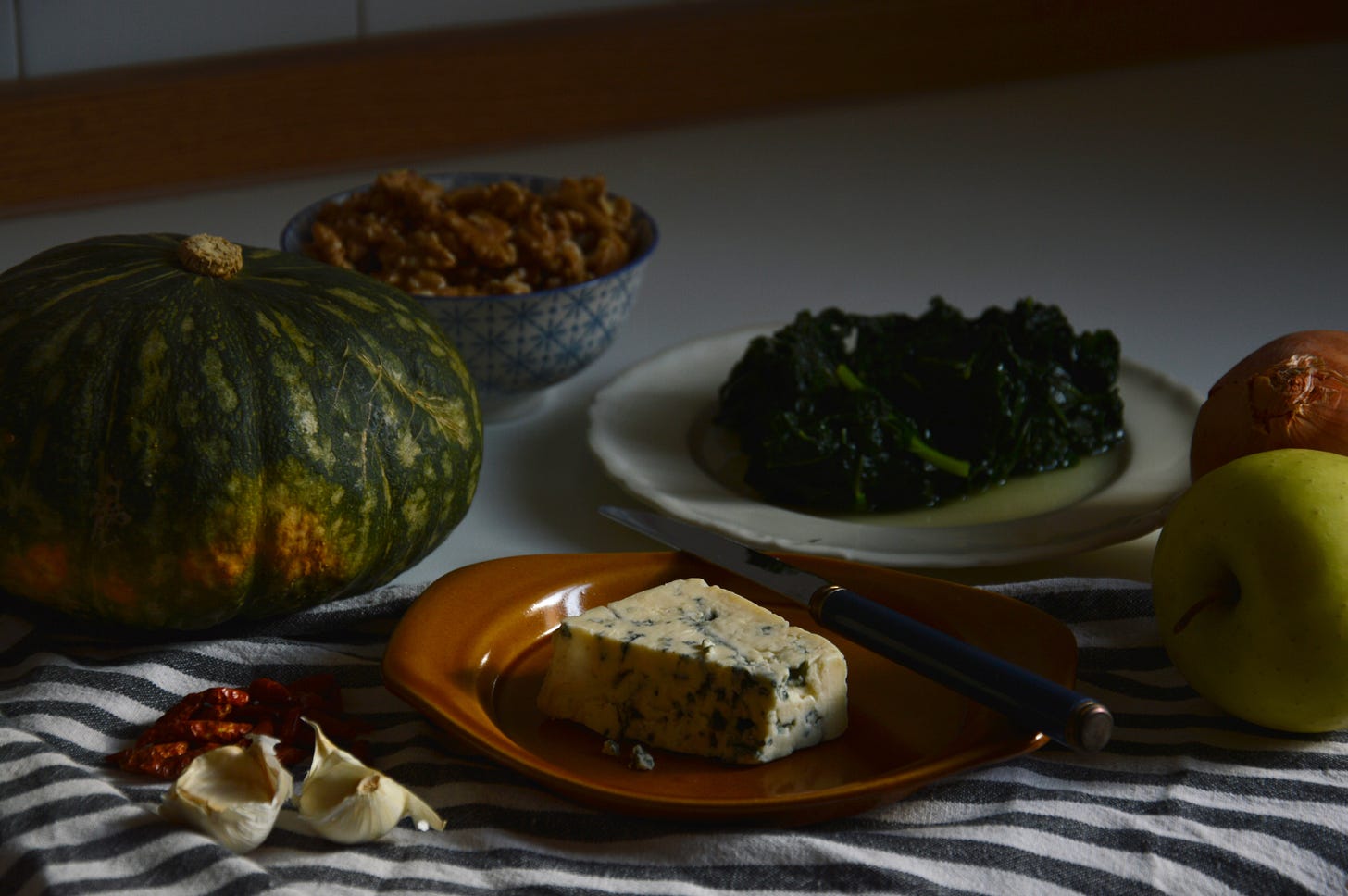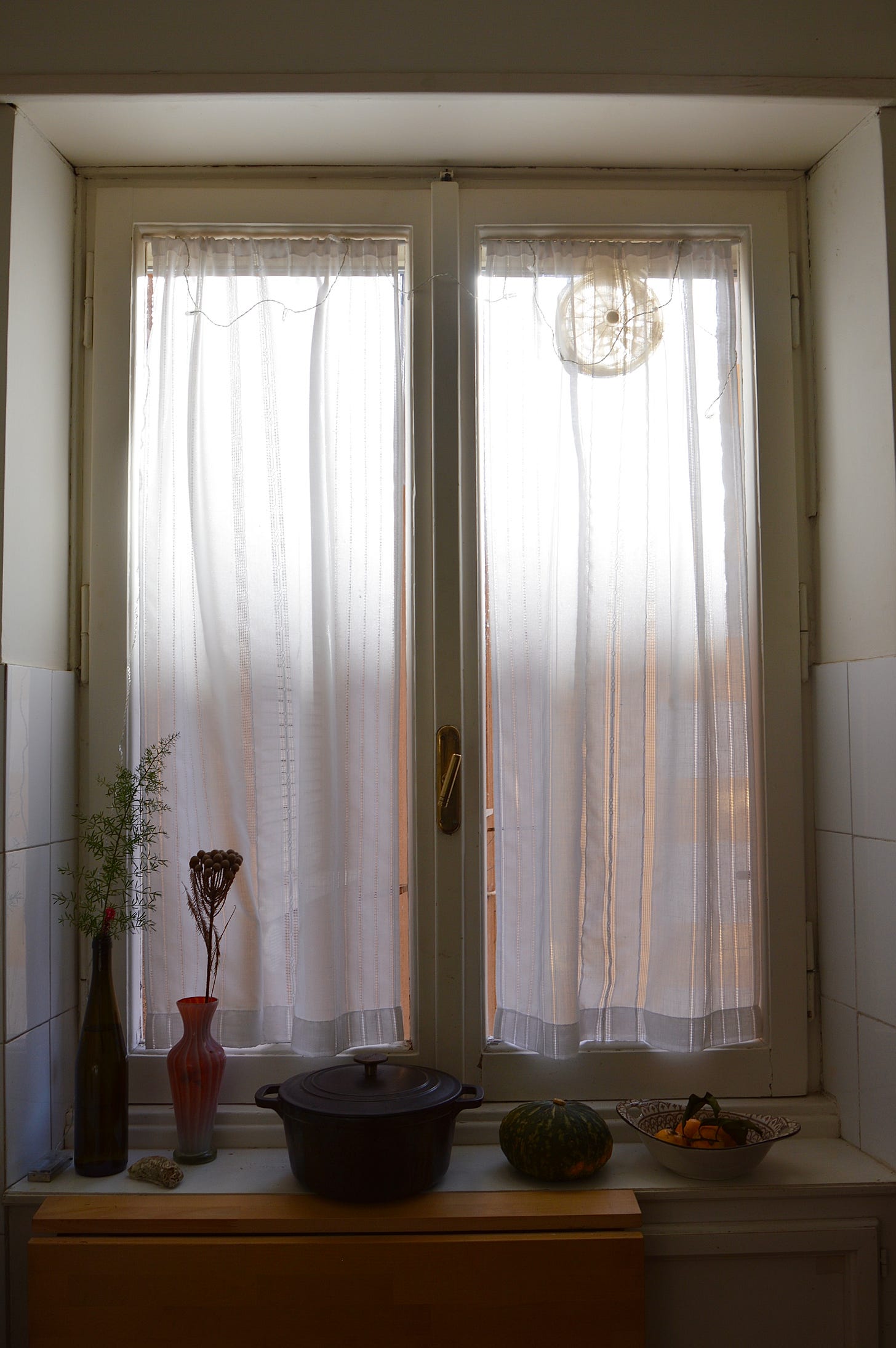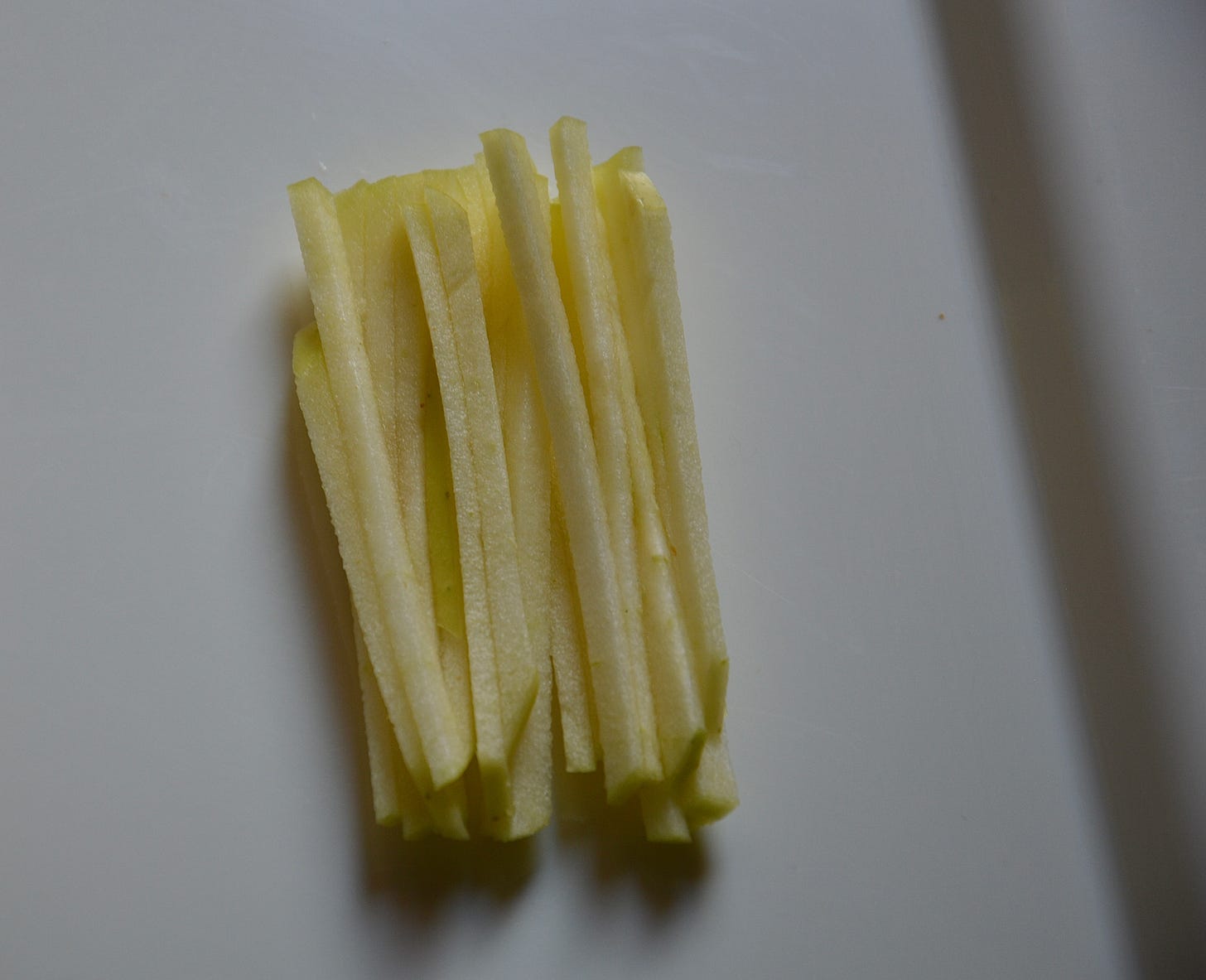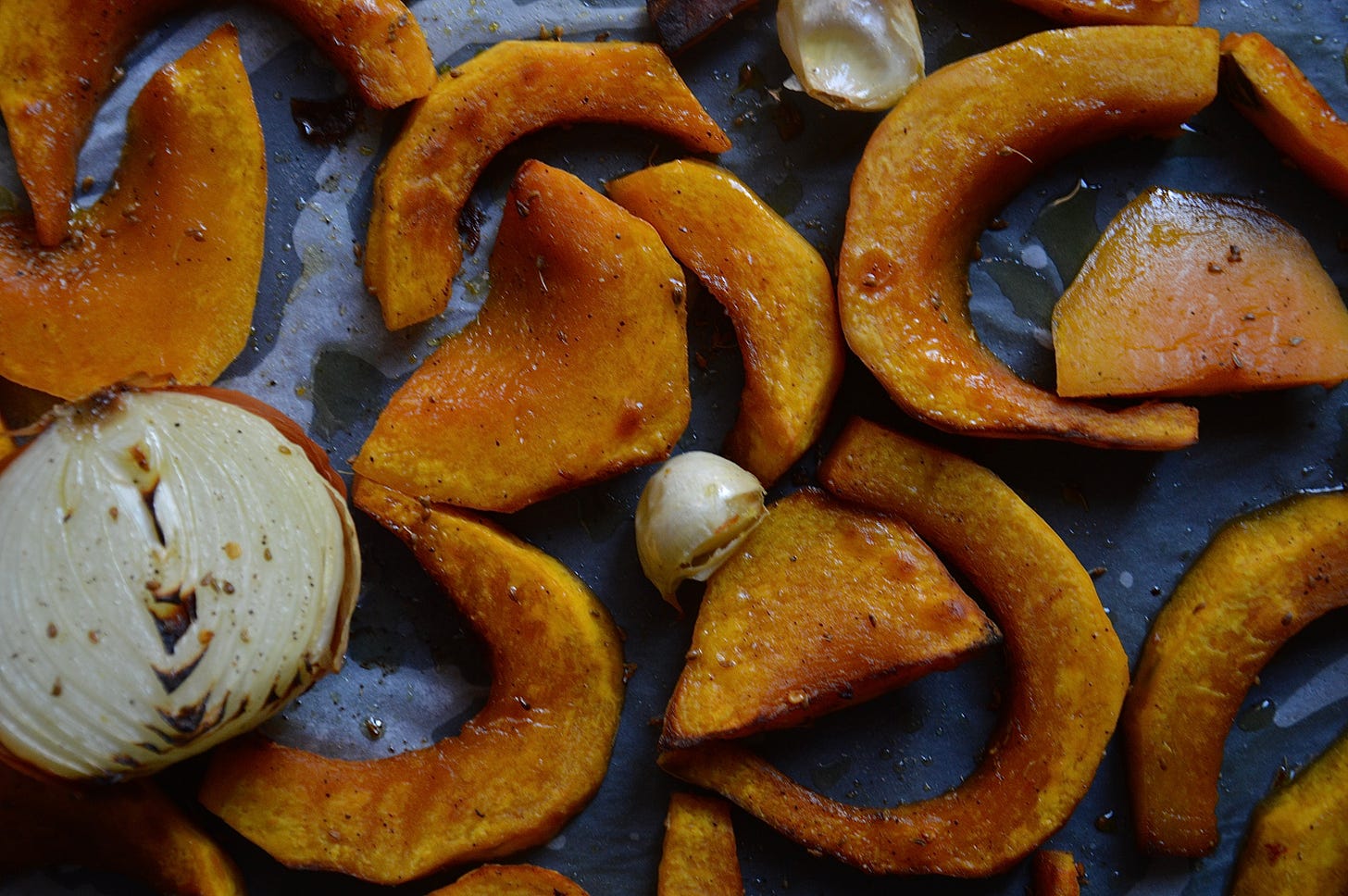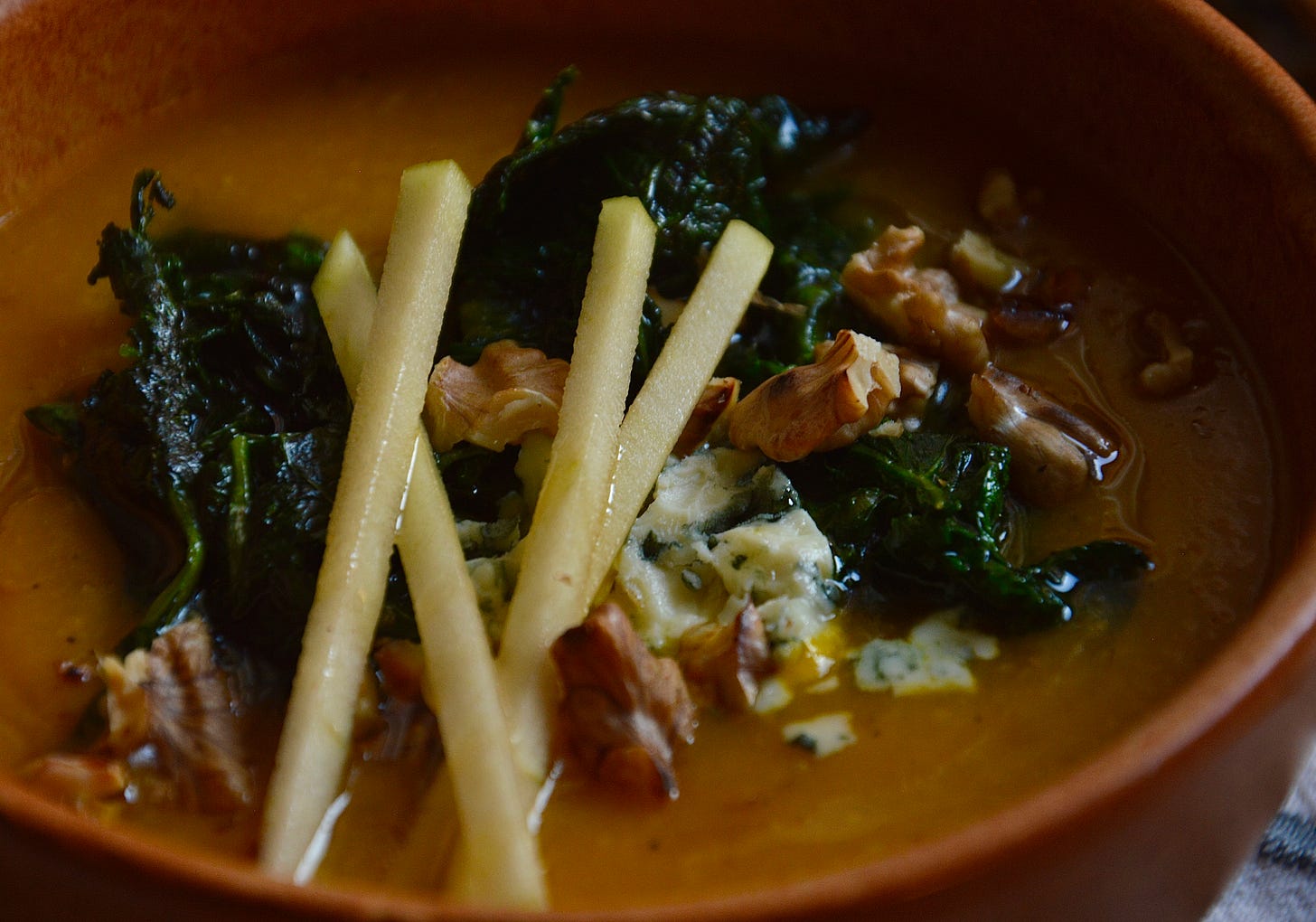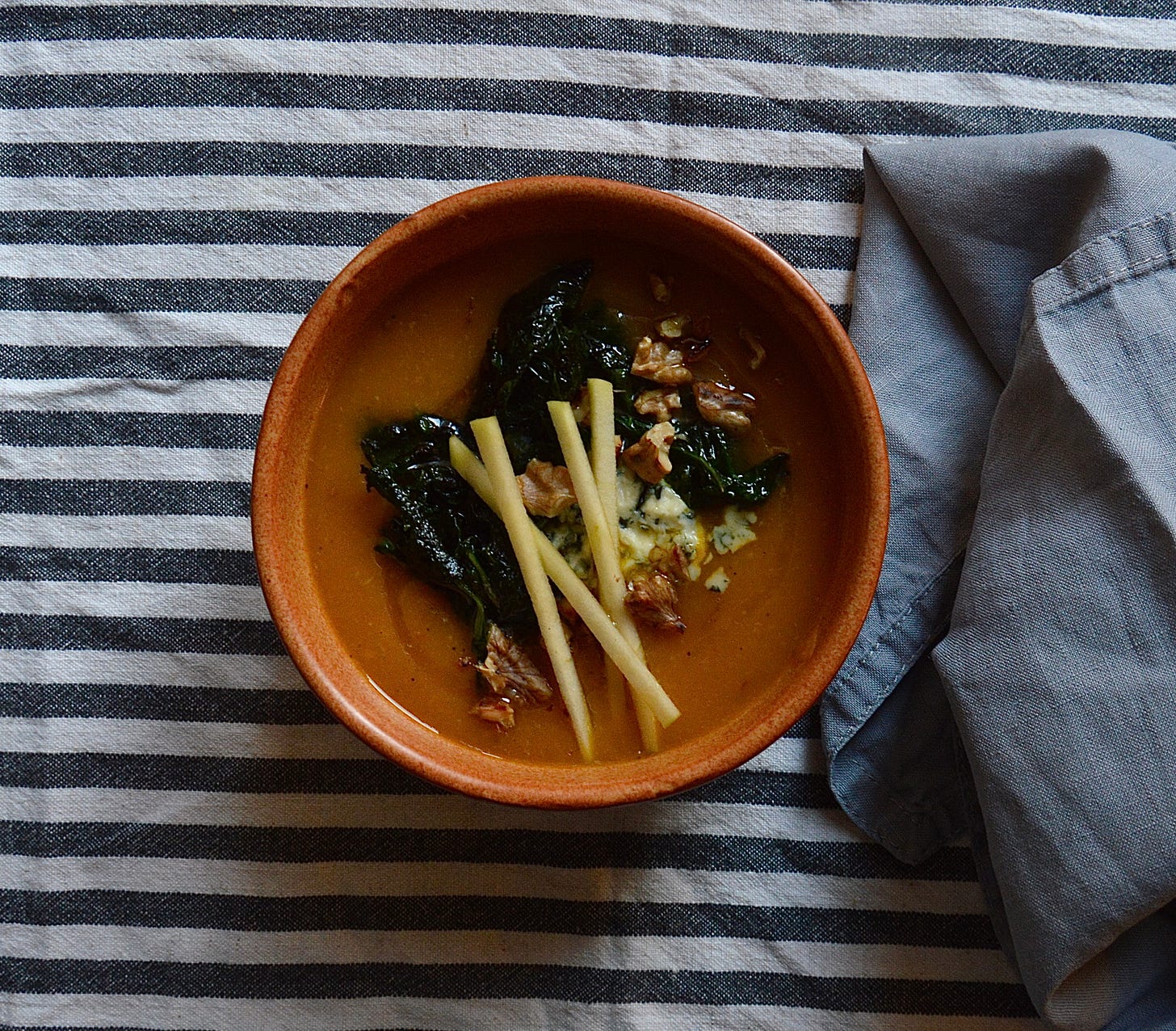beginning of a squash season! 🍂
creamy roasted kabocha squash soup with cavolo nero, blue cheese, walnuts and apple recipe
Key points:
Roasting before cooking a pureed soup adds the natural sweetness of vegetables and brings out some smoky flavours
Other autumnal vegetables that make for great pureed soups:
root vegetables such as fennel, carrots, potatoes and Jerusalem artichokes
different kinds of squash including butternut, acorn or pumpkin
brassicas like broccoli or cauliflower
Add aromatics such as garlic, onion, leek or shallot (don’t peel the garlic to avoid it burning in the oven) for additional allium flavour.
Use a knife that is strong enough for cutting through sturdy vegetables and make sure is sharpened well
Using an immersion blender is your best bet and the soup can be blended in a pot. To avoid splashes first turn off the heat, and then immerse the blender and start mixing.
If you add too much liquid into your soup and want to thicken it up, just add a bit of lentils or potatoes, and later blend it all
Freestyle with your ingredients! Add some texture contrast! Making pureed soups is a perfect way to use up leftovers from the fridge
Serves: 4
Ingredients:
1 kabocha squash
1 large onion
3 cloves of garlic
2 tablespoons of anise seeds
freshly ground black pepper
a splash of white wine vinegar
1 teaspoon of chilli flakes
extra virgin olive oil
vegetable stock/water to cover the vegetables
half a bunch of cavolo nero
50g blue cheese
50g walnuts
half of an apple
sea salt
Method:
Set the oven to 180°C.
Kabocha squash:
Using a metal tablespoon remove the stem by placing the spoon slightly underneath the stem and it will naturally pop out. Grab a big sharp knife and slice the squash in half. The kabocha squash skin is edible, but for this recipe, if you want the soup’s colour to be orange (like I do) you should remove the skin. Lay each kabocha half on the chopping board (flat side down), and cut the peel off. Next using a tablespoon scrape the seeds and pith. Slice the two halves into half again and into wedges (make sure they’re similar in thickness so the kabocha cooks evenly).
In a large bowl combine kabocha, a generous amount of olive oil, anise seeds, and chilli flakes and season with salt and black pepper. Toss to coat and single layer on a tray with parchment paper. Bake until soft and golden for around 15-20 minutes.
Cavolo nero:
Bring water to a boil for blanching cavolo nero. Take leaves off their stalks - hold the bottom of the stalk with one hand, and with the other hand push the leafy part up (the stem and stalks are too tough to eat). Wash the leaves and once the water is ready, add plenty of salt and blanch the leaves for around 3 minutes.
Walnuts:
Heat the walnuts over medium heat for around 5 minutes or until golden brown. Stir frequently for even colour. Place the walnuts in a ziploc bag, seal the bag and then tap with a rolling pin to break them into smaller pieces.
Julienne an apple:
Place the apple upright on the chopping board and slice four straight cuts separating the sides from the apple core (try not to cut into the core). Lay one piece of skin side up and cut 2cm slices. Then combine three slices evenly, and cut long thin strips.
Creamy soup:
Squeeze garlic cloves from the skin. Add the kabocha, onion, garlic, and enough liquid (so the vegetables are nearly covered) in a medium pot. Bring to a boil and then simmer for around 20 minutes, stirring occasionally to prevent sticking to the bottom of the pan. Season with more salt and black pepper. Blend using an immersion blender until smooth.
To serve, add blanched cavolo nero, and crumble blue cheese, then sprinkle toasted walnuts on top, and drizzle some olive oil.





